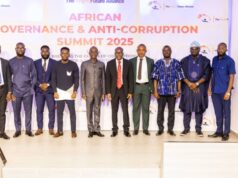The Ghana AIDS Commission (GAC) has raised serious concerns about the state of HIV treatment in the country, revealing that more than half of individuals living with the virus are not receiving antiretroviral therapy (ART), the standard treatment proven to save lives and prevent transmission.
This critical warning was issued during a press briefing in Accra on July 3, 2025, as the Commission launched its 2024 National and Sub-national HIV and AIDS Estimates and Projections Report.
According to the latest data, only 334,721 people — just 47% of those diagnosed with HIV — are currently receiving ART. This leaves a concerning 52.6% of HIV-positive individuals without access to treatment, a situation the Commission has described as both “disturbing” and a major threat to national health security.
“This isn’t just about those infected — it places the entire population at risk,” said Isaiah Doe Kwao, Director of Research, Monitoring and Evaluation at GAC.
He stressed the urgency of scaling up treatment efforts, noting that untreated individuals can contribute significantly to the spread of the virus.
Ghana Struggles to Meet Global HIV Targets
Ghana’s current treatment gap jeopardizes the country’s ability to meet the UNAIDS 95-95-95 global targets, which aim for:
95% of people with HIV to know their status
95% of those diagnosed to be on sustained treatment
95% of those on treatment to achieve viral suppression
Despite gains in some areas, the country recorded 15,290 new HIV infections in 2024 and reported 12,614 AIDS-related deaths. However, the Commission estimates that ART helped prevent at least 12,358 additional deaths.
Women and children remain disproportionately affected. Females accounted for 68.5% of new infections (10,303 cases), while 5.4% (1,243 cases) were in children under the age of 15. Encouragingly, 99.3% of HIV-positive mothers accessed prevention of mother-to-child transmission (PMTCT) services, although GAC urged continued follow-up care to protect infants born to HIV-positive mothers.
Funding Cuts and Social Barriers Undermining Efforts
Speaking at the event, Deputy Chief of Staff Nana Oye Bampoe Addo attributed the inadequate treatment coverage to several compounding factors — including healthcare infrastructure challenges, social stigma, misinformation, poverty, and most notably, declining international support.
She noted that recent funding cuts, particularly the withdrawal of support from the United States Agency for International Development (USAID), have slowed progress significantly.
“These challenges are real, but so is our determination,” she said. “We are working toward sustainable, domestic financing solutions, integrating HIV care into broader health policies, and employing data to deliver smarter, more efficient care. No one living with HIV should be left behind.”
She added pointedly: “Every untreated person is one step closer to severe illness or death. In 2025, that should not be the case.”
Regional Breakdown of New HIV Infections in 2024
The report also provided a breakdown of newly recorded infections by region, with urban areas leading the tally:
Greater Accra Region: 3,436
Ashanti Region: 2,997
Eastern Region: 2,019
Central Region: 1,140
Western Region: 1,120
Bono Region: 875
Volta Region: 809
Bono East Region: 649
Western North Region: 478
Ahafo Region: 350
Upper East Region: 345
Northern Region: 318
Upper West Region: 292
Oti Region: 222
Savannah Region: 143
North East Region: 97
The Commission reaffirmed its goal of ending AIDS in Ghana by 2030, aligning with global efforts. However, officials made it clear that reaching this target requires urgent action — more treatment coverage, better public education, reduced stigma, and stronger healthcare infrastructure.








